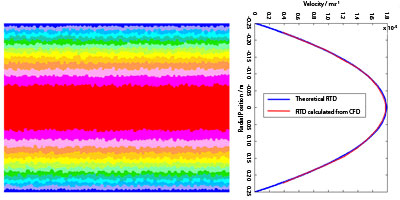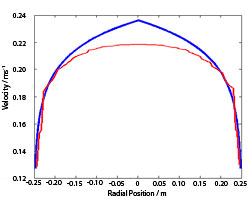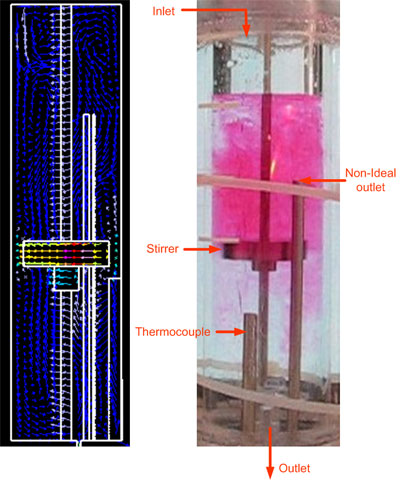Residence Time Distributions from CFD
The aim of this project was to develop a new method for first-pass validation of Computational Fluid Dynamics (CFD) flow fields, by comparing calculated residence time distributions (RTDs) with those obtained from experiments. The new method was validated against analytical solutions before being applied to simulating the Cambridge Weblab Reactor.
Predicting Residence Time Distributions from Particle Tracking
The first step in the process was to draw and mesh the desired geometry. The fluid flow through this geometry, with appropriate boundary conditions, was then predicted using the commercial CFD package, Star-CD. Once a converged flow-field had been obtained, the residence time distribution was calculated in a post-processing step by tracking a population of massless particles. These particles are introduced at the inlet and follow the flow through the geometry to the outlet(s) where their residence times are recorded. The residence time distribution is reconstructed by applying a filtering algorithm to smooth these results.
Validation




Application to the Cambridge Weblab Reactor




